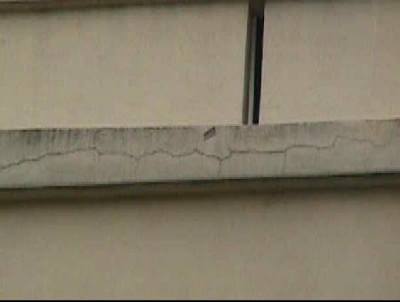Case 1
- Introduction
- Causes of Defects
- Good Practices
- Standards
- Maintenance and Diagnostics
- Remedial
- Similar Cases
- References


Introduction
Type of Building: Public
This is an example of a horizontal crack on a RC beam. In reinforced concrete flexural members, cracking is inevitable. Wide cracks are objectionable not only due to aesthetic reasons, it may also cause the corrosion of reinforced steels by allowing the entrance of water or aggressive solutions through the cracks. Some common types of cracks are Bond Cracks (cracks formed between mortar and aggregate prior to the application of external load), Short Term Cracks and Long Term Cracks.
Cracking can be an important sign that reinforcement is rusting. Cracks may impair the structural integrity of the building. They allow water to penetrate the concrete to cause corrosion of the reinforcement bars. Spalling of concrete will occur if cracks are deep and wide enough.
Concrete is fireproof but not waterproof. It is heterogeneously composed mainly of coarse aggregate (stone), fine aggregate (sand) and hydrated cement as the binder. Strong in compressive but weak in tensile strength, reinforcing steel rods and/or prestressing tendons are included in the tensile zone; hence, the name “reinforced” and/or “prestressed” concrete. Concrete may crack in different ways – click “Concrete Cracking” for more details.